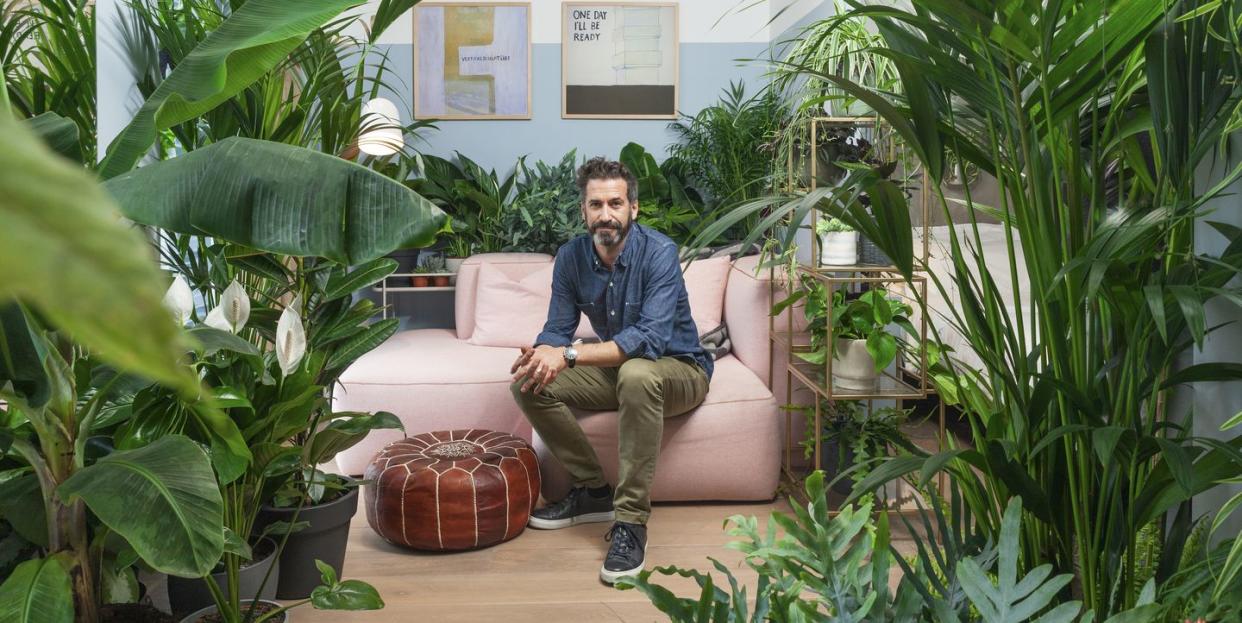Oliver Heath on the plants that will bring bring maximum health & wellbeing benefits

A trailblazer in the design world for more than 25 years, Oliver Heath is globally recognised as an expert in biophilic and interior design. We caught up with him to chat about his passion and commitment to improving health and wellbeing in the built environment.
For the past eight years, Oliver has been practising biophilic design, creating spaces that make people happier and improve their mental and physical wellbeing. He explains: 'Biophilia means love of nature. It focuses on our innate attraction and genetic connection to the natural world. We’ve all got different experiences, cultural, geographic, social... but the one thing that nearly everyone has had is a positive experience of nature.
'With biophilic design, you’re trying to create a connection between the physical and emotional responses you had to, say, having a picnic in a field or sitting next to a babbling brook, and bring those feelings into the space you’re in by using natural materials.’
Oliver firmly believes that biophilic design has the ability to change lives. 'It can shift our emotions and our physical and emotional states. There’s a lot of stress in our everyday lives – the Health & Safety Executive cites stress as one of the biggest causes of absenteeism from work – and we’re not good at dealing with it. We’re also guilty of screen overload – there’s a lot of technology around to distract us. We rarely get to just sit down and be. Plus, 90 per cent of the UK is now urbanised, which means there’s an ever greater loss of connection to the natural world. Biophilic design can help to address this.’
So should we all be biophilically designing our homes to boost our personal health and wellbeing? 'We can certainly improve the spaces we live in so they support us, helping us to recuperate from stress and connect us to the people around us. Introducing plants into our homes and offices brings both physical and psychological benefits.'
For maximum health and wellbeing advantages, Oliver advises being selective with greenery. 'Plants can produce oxygen and remove carbon dioxide – some do this at night and these ones are great for bedrooms. Mother-in-law’s tongue, gerbera, English ivy and lavender are good choices.
Others are just great for having around your home to help you de-stress – I love big, leafy plants such as monstera (Swiss cheese plant), rubber trees and peace lilies. Plants are also wonderful at adding a dynamic quality to the room, picking up on small movements in the air and moving gently throughout the day, turning a space from static to interesting.'
Last year Oliver created a suite at the Leman Locke hotel in London, putting his biophilic design principles into practice in a project for The Joy of Plants. 'This suite had a number of different areas where you do different things, so I wanted to design it in such a way that it helped deliver what was needed at any given time, whether that was relaxing, working, connecting and so on. So in the bedroom, we put plants that produce oxygen; in the lounge area we added some that have gentle movement to help guests relax, a bit like looking at a fire or fish tank; and in the kitchen we placed some plants with edible leaves that you could pick and add to your food, such as basil and other herbs.'

Another recent project of Oliver’s was the biophilic redesign of Re:Mind yoga studio in central London. 'The owners came to us as they wanted to create a space that worked for their clients, both physically and mentally. They’re in Victoria, so there are buses outside, noisy building work going on, and not amazing air quality. We specifically chose materials to minimise air pollution, added a ventilation system and colour-changing lights, and we also improved the acoustics.
'In the main meditation space we added a living wall of plants at one end and an installation of nine Himalayan salt crystal lights at the other, the intention being to create backdrops that would frame the people leading the classes in either lush green or diffused soft pink light. Douglas fir timber was used on walls and flooring for its wide grain to accentuate that sense of naturalness.'
• Subscribe to House Beautiful magazine today and get 6 issues for just £15, delivered directly to your door every month.
Like this article? Sign up to our newsletter to get more articles like this delivered straight to your inbox.
You Might Also Like



